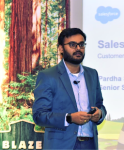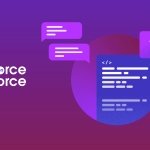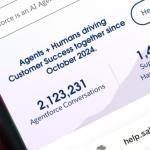COVID-19 is reshaping the office property market as businesses move to decentralised and work-from-home models in the mid to long term. This has implications for Real Estate Investment Trusts (REITs) and their investors as falling demand threatens to drive down the value of CBD office space. In Singapore, for example, the vacancy rate of office space rose to 11% with office rents falling by 0.8%, and prices down 4%.
That makes it more important than ever for REITs to work smarter. Some are turning to technology like CRM platforms to generate deeper insights and drive better decision making. Additionally, as businesses change the way they use traditional work spaces, REITs can assist tenants transition to alternative real estate offerings buoyed by the need for collaboration.
To be effective in this climate, REITs need a 360-degree view of tenants. But lack of integration between real estate management software platforms can create data silos. This leaves the leasing rep without transparency into lead generation, deal progression, and tenant relationships.
Salesforce can solve this problem. REITs and real estate agencies can use Salesforce to build an integrated CRM for real estate.
From integrating legacy systems to marketing automation on the platform, and empowering all this data with AI, a Salesforce CRM can provide a single source of truth for leasing reps. Portals can enable collaboration with brokers and tenants. Lastly, help your tenants return to work with ongoing health checks and safety protocols in the new normal.
Here’s how to use Salesforce to build an integrated real estate CRM for REITs and leasing reps in five steps:
Step 1: Set up a CRM platform
Sales Cloud in the Customer 360 suite is the core of your CRM for REIT and real estate. This is where you build a lead-to-lease pipeline to give leasing reps visibility into deal progression across the entire tenant journey.
Leasing reps can follow tenant journeys through each of the opportunity stages — from new lead to deal closure. They can also use Salesforce’s point-and-click approval process to enable seamless and transparent negotiations and discount approvals, and create custom objects in Sales Cloud to give leasing reps seamless access to lease information and property inventory data.
AppExchange enables you to integrate relevant apps into Sales Cloud to add specific functionality. For example, Conga is a document generation app that gives leasing reps access to a range of templates they can use to instantly create key documents like a Letter of Intent.
Step 2: Add marketing automation
Leasing reps need a constant flow of leads funneling into the Sales Cloud pipeline. This is easy with a simple Pardot integration.
Pardot is a marketing automation solution that helps you to generate and nurture leads, and seamlessly pass them onto leasing reps without the need for integration. This combines the benefits of marketing and CRM in one platform.
Lead transfer can be automated to save time, and leads can be placed straight into an automation journey. This will help leasing reps nurture leads through opportunity stages from project announcements to site visits and leasing discussions.
Pardot also has a range of lead generation tools for marketing managers. For example, Pardot enables marketing teams to build web forms to capture prospect information, and build email templates that drive prospects to Pardot landing pages. Built-in marketing analytics enable smart campaign performance monitoring and show the return on investment of each campaign.
Step 3: Integrate Enterprise Resource Planning (ERP) data
To create a single 360-degree tenant view, Sales Cloud may need to call on data from various sources including your ERP, broker CRMs, and other legacy platforms. MuleSoft makes this process seamless with easy data integration between systems.
MuleSoft connects multiple applications together. It enables simple data syncing between various sources including inventory applications and popular ERPs like SAP and Oracle. For less well-known platforms, MuleSoft uses a point-and-click methodology to create APIs capable of syncing data with Sales Cloud from just about any software platform.
With all tenant data brought together from multiple platforms into a single view on Sales Cloud, the leasing rep no longer has to juggle multiple systems to find basic data like contract terms, contract expiry dates, and lease renewal dates. They can access all relevant data and get a 360-degree view of each and every tenant within Sales Cloud.
Step 4: Build partner and tenant portals
In REITs and large real estate agencies, selling is not a single person play. It often requires collaboration between leasing reps and property brokers. For example, brokers may be responsible for matching prospects to properties and scheduling site visits. To do so, brokers often need to exchange information with leasing reps.
Experience Cloud can be used to build a partner portal that boosts collaboration between leasing reps and brokers. Both can use the portal to access key tenant and inventory data. Leasing reps and brokers can also communicate inside the portal with web-based communication tools such as Chatter or Slack.
Tenant portals hosted in Experience Cloud can also be used to improve communication between leasing reps and tenants, and enable tenant self-service to ease leasing reps’ workloads. For example, tenants can log in to a tenant portal to view contract information, book meeting rooms, and raise customer service tickets without help from their leasing reps.
Step 5: Leverage artificial intelligence
Leasing reps can work smarter with artificial intelligence (AI) built into your Salesforce real estate management solution.
Einstein is Salesforce’s AI technology that helps customers sell smarter, deepen customer relationships, scale customer support, and personalise experiences. It is embedded in Sales Cloud to provide leasing reps with critical insights on deal progression, identify upsell opportunities, and complete property evaluations based on existing data.
Einstein can also use AI insights to identify important emails based on keyword scans, and help leasing reps prioritise their inbox around high-value tasks.
Step 6: Manage Employee Health, Safety and Security
REITs and property managers can help tenant companies deploy solutions like Work.com to support safe return-to-work protocols, and ongoing health and safety checks in the new normal.
With Work.com your tenant companies can manage health-related interactions and workplace planning on a single platform. This enables companies to boost healthcare and community responsiveness now, and for future crises.
Your tenant companies can use the Workplace Command Centre to take swift action on employee wellness, and help their employees adapt to new ways of working with myTrailhead. You and your tenants can also track the latest independent public health data through the Tableau COVID-19 Data Hub.
Salesforce helps busy leasing reps work smarter, smashes data silos, and creates a single source of truth. Leasing reps get the visibility and insights they need to progress deals, manage tenant relationships, and improve performance across the board.

























